Kansas City Art Institute
Introduction
Text-to-speech Audio
Originally founded as the Sketch Club in 1885, Kansas City Art Institute has become a fully accredited, private four-year college of art and design. The school was first named the Fine Arts Institute of Kansas City but was changed in 1920. KCAI acquired its permanent home here in 1927 with the generous purchase and donation of the August R. Meyer residence, now Vanderslice Hall. Once the hub for all campus activity, it now acts as the school’s administrative office. Many renowned local artists have attended and taught throughout the years, including Walt Disney, Thomas Hart Benton, and Leonard Pryor. Over time, the Institute has undergone many renovations and improvements. Today, KCAI offers 13 majors in the B.F.A program, two art galleries and many programs both on and off campus.
Images
Vanderslice Hall was the original building that became the permanent home of Kansas City Art Institute in 1927, and was once the home of August Meyer.
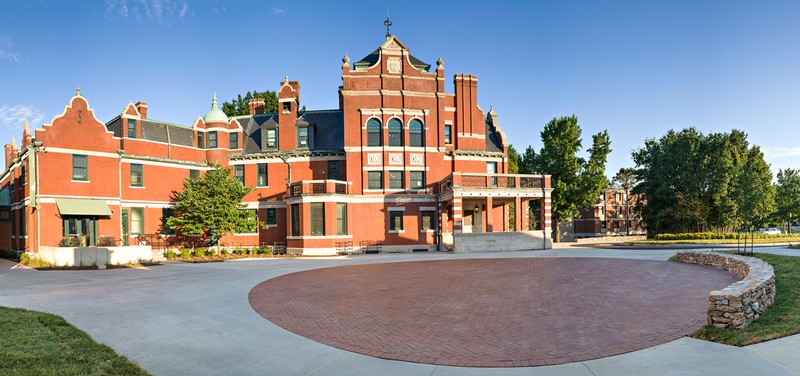
This undated photo shows Marburg, the residence of August Meyer, which was purchased in 1927 and donated to KCAI. It is now called Vanderslice Hall. Photo courtesy of Missouri Valley Special Collections, Kansas City Public Library.
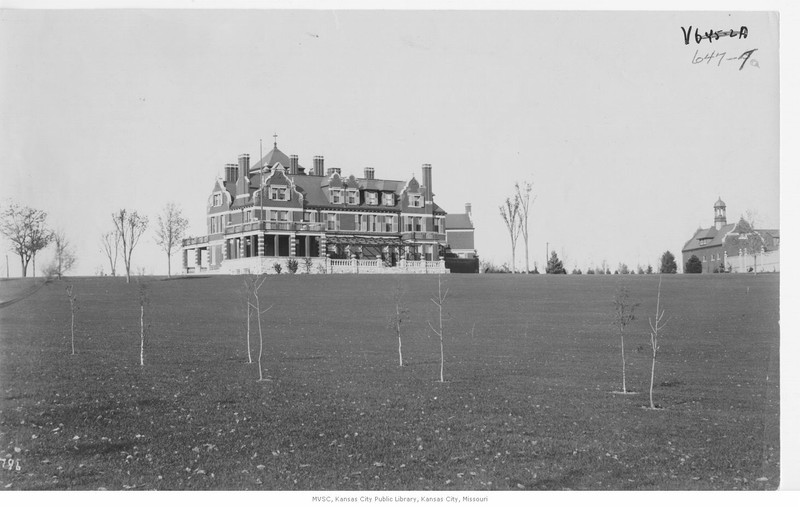
The residence of August Meyer, seen in this photo c.1903, was once named Marburg. Now, Vanderslice Hall serves as administrative offices for Kansas City Art Institute
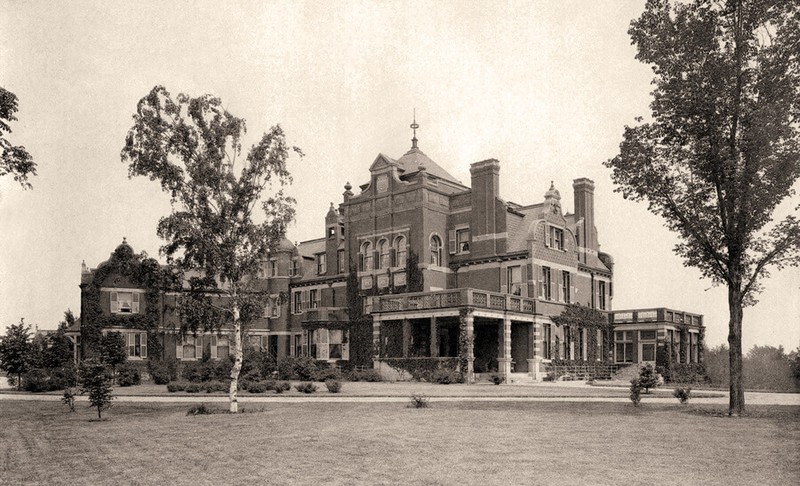
Jannes Library and Learning Center at KCAI
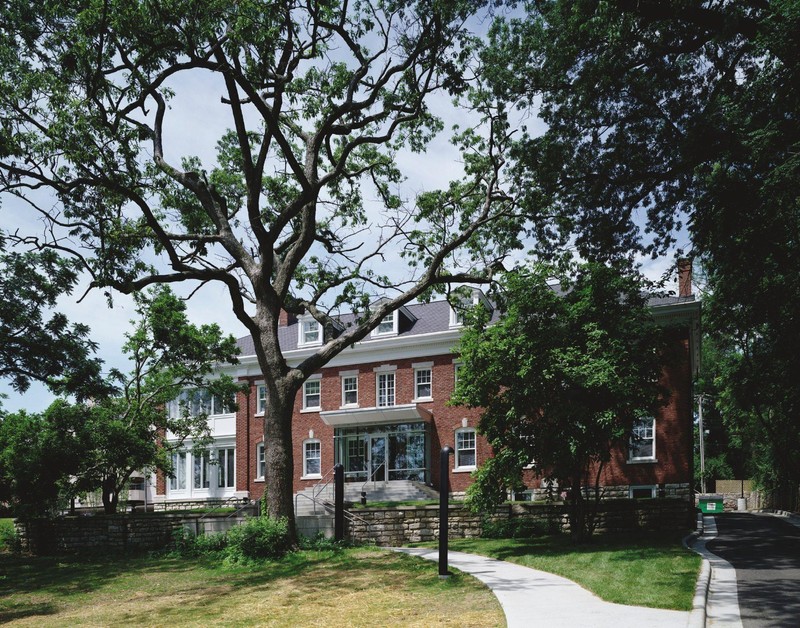
Mineral Hall at KCAI
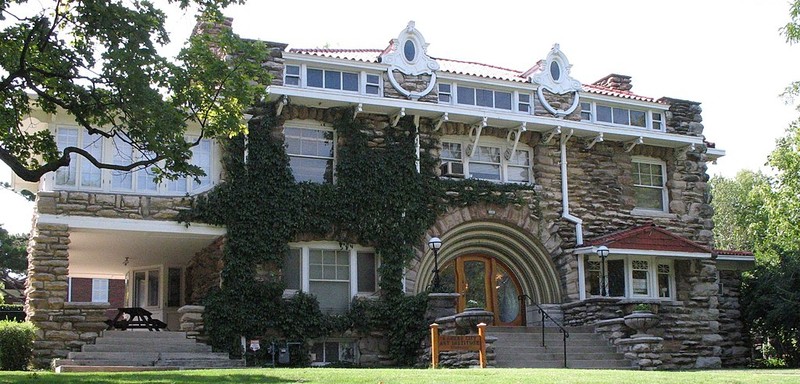
Paul and Linda DeBruce Hall at KCAI
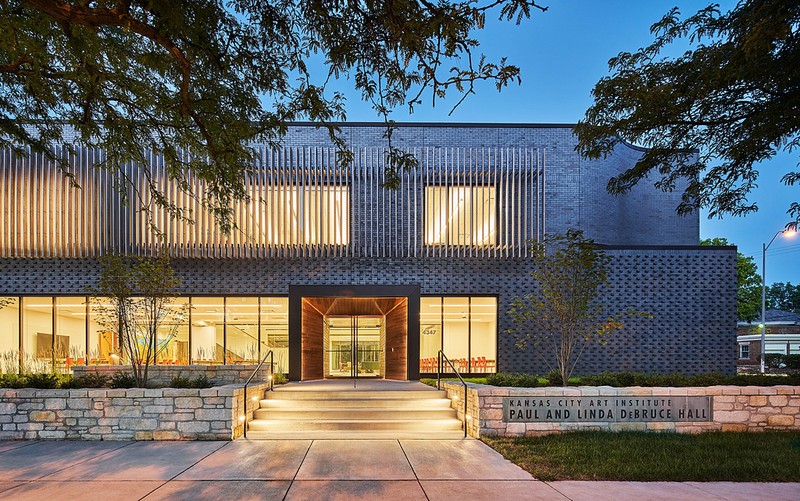
David T. Beals III Studios for Art & Technology at KCAI
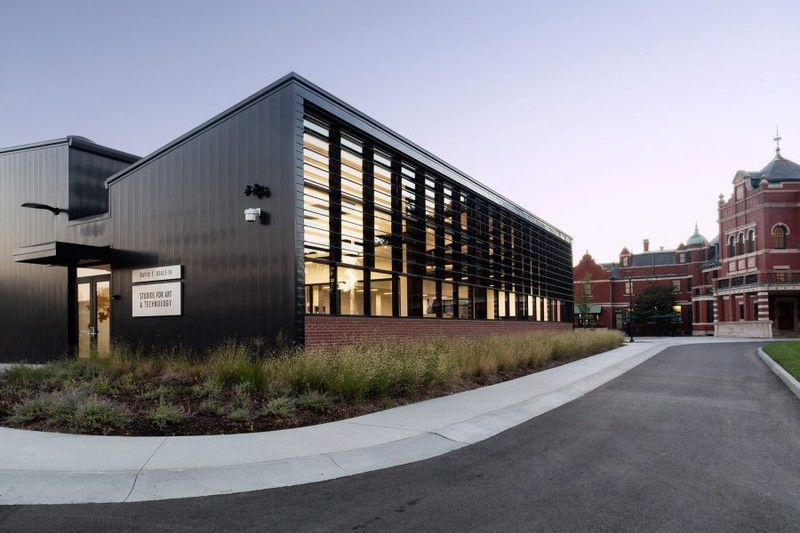
Barbara Marshall Residence Hall at KCAI
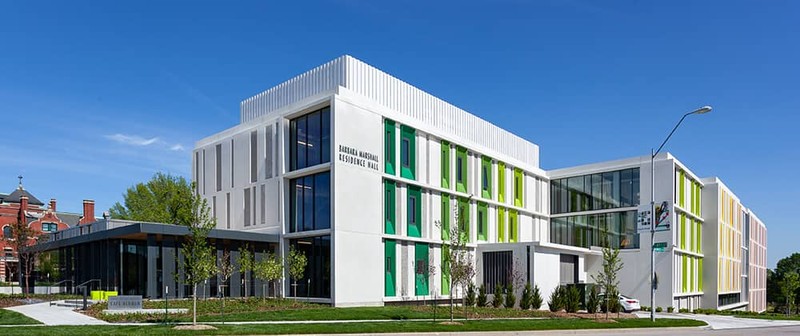
Campus map for Kansas City Art Institute (2022)
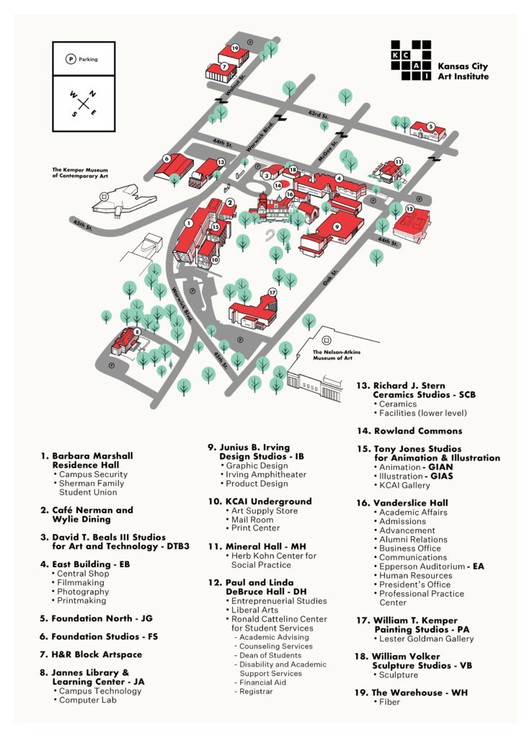
Backstory and Context
Text-to-speech Audio
The Kansas City Arts Institute was first founded by local artists in 1885 as the Sketch Club. Starting with twenty members, this was the first organized art effort in Kansas City in which they came together to “talk over art matters in general and to judge pictures.” The club was instrumental in helping create the Kansas City Art Association and School of Design, which was incorporated in 1887. By 1888, the school began holding classes and displaying work from around the world. The number of students at the Institute had increased to 114 in 1892, while the Association had 244 members. After a 14-year recovery from an 1893 fire, the successor to the School of Design, the Fine Arts Institute of Kansas City became incorporated in 1907. During World War I, students sold their art in an effort to raise funds for the Red Cross. In 1915, the school began offering Saturday classes in their offices above the YWCA building at 1020 McGee. It was here that famed animator Walt Disney attended design classes, from 1915 to 1917.
In 1920, the name of the school was changed from the Fine Arts Institute of Kansas City to Kansas City Art Institute and J.C. Nichols became the President of the Board until 1927. The school operated at several locations around the city until 1927, when businessman and art philanthropist Howard Vanderslice purchased and donated the residence at 4415 Warwick, which became the permanent home to KCAI. This mansion was the home of late August R. Meyer (1851-1905), a successful mining engineer and the first president of the Kansas City Parks Commission (1892) where he helped develop the Parks and Boulevard system. The building and galleries opened on September 8, 1928 with a large crowd and a dedication address delivered by Stratton Brooks, President of the University of Missouri. Meyer’s home, now called Vanderslice Hall, was accepted into the National Register of Historic Places in 1982 and remains an administrative building for the school.
Kansas City Art Institute began to grow in the mid 1940s when the Servicemen's Readjustment Act (G.I. Bill) helped to boost enrollment. In 1947 the school became qualified to grant B.F.A., B.A.A., and master’s degrees but it wasn't until 1964 that they became fully accredited by the North Central Association (NCA). However, after struggling with attendance for some time, renovations and improvements proved necessary. Over the coming years, this included the restoration of Mineral Hall (1983), the new H&R Block Artspace (1999), and the opening of Jannes Library and Learning Center (2003), which won the AIA-Kansas City Merit Award for Excellence in Design and the Historic Kansas City Foundation’s Preservation Award. By 2004, the school was seeing a steady increase in attendance. Since then, they have continued to open new facilities and introduce new programs, both on and off campus. Today KCAI offers a diverse curriculum and immersive studio experience with 13 majors offered in their B.F.A. program.
Many acclaimed local artists have taught at and attended Kansas City Art Institute. Painter of Social Realism and scenes of Regionalism John Steuart Curry attended his first formal art training during summer classes in 1918. From 1935 to 1941, renowned Thomas Hart Benton served as the Chair of the painting department. In 1948, abstract painter and multidisciplinary artist Robert Rauschenberg enrolled in the interior design program. That same year, the school saw its first African American student Leonard Pryor, who became an advocate for education and the arts in Kansas City. Minimalist artist, sculptor and writer Robert Morris attended in the early 50s.
August Meyer Home
Originally named “Marburg,” this 35-room, three-story Queen Anne style mansion was designed by architects Van Brunt & Howe and completed in 1896. It was situated on eight acres of land with beautifully landscaped grounds featuring rare plants, a Japanese garden, and koi pond. Constructed primarily of brick and limestone, the home offers an array of decorative and architectural detail. The main entrance is located on the north and rests under a grand porte cochere with supporting piers that are interspersed with stone banding and topped with a stone and ironwork balustrade. One of the most prominent features is a projecting gabled pavilion that houses the main staircase of the home. It is separated into three bays by brick pilasters and contains triple windows on the second and third floors. A projecting bay and domed turret are also visible. Around the exterior, a variety of curvilinear gables are seen, many of them topped with finials, in addition to projecting headers and elaborate chimneys that give a textural quality. In 1930, the Epperson Auditorium was added to the south side. This addition created a U-shape with the east facade and the servant’s wing to the north. The exterior of this building is essentially unaltered while some of the interior has been renovated to accommodate office space. However, the original entrance hall, grand staircase and fireplaces on the first level are still intact. The building was accepted to the National Register of Historic Places in 1982.
Thanks to a generous grant from the William T. Kemper Foundation, the historical integrity of Vanderslice Hall was restored in 2016 by the award-winning architectural firm GastingerWalker&. According to Kirk Gastinger, “One of the many goals in historic preservation is for the viewer to not notice what we did, but to admire the design and craftsmanship of a previous generation.” For this project, all of the exterior stone work was carefully power washed or scrubbed by hand. For the areas needing repair, an extensive review of mortar was completed to ensure a match to the original. The roof and intricate metal repairs were also done. In addition, nearly all of the art-glass windows were removed and cleaned, while the other windows were replaced with new thermal-pane casements, matching the originals. With help of a gift from the Dickinson Family Foundation, the interior space was restored to its original grandeur state including new hardwood floors on the ground level, paint and fixtures in the reception rooms, and French doors leading to the terrace.
Sources
Timeline of KCAI, Kansas City Art Institute. Accessed March 9th 2022. https://kcai.edu/about/history/kcai-timeline/.
Farrell, Lora. Kansas City Art Institute, Missouri Remembers. September 20th 2021. Accessed March 9th 2022. https://missouriartists.org/group/recppmarmovclszos/?s=&i=0&sz=50&sort=sort_title.label.sort&dir=asc.
Missouri SP Meyer, August, House, National Archives Catalog. Accessed March 9th 2022. https://catalog.archives.gov/id/63819250.
William T. Kemper Foundation gives major grant to KCAI for the restoration of magnificent 1895 “Vanderslice Hall“, Kansas City Art Institute. June 16th 2016. Accessed March 9th 2022. https://kcai.edu/8655/.
https://kcstudio.org/renovation-kcais-historic-vanderslice-hall-brings-mansion-back-grandeur/
https://kchistory.org/islandora/object/kchistory%3A104309/datastream/OBJ/view
https://kcstudio.org/new-book-traces-architectural-history-of-kcai/
https://www.bnim.com/project/jannes-library-and-learning-center
https://en.wikipedia.org/wiki/Mineral_Hall
https://www.archdaily.com/catalog/us/products/25845/brick-facade-of-the-kansas-city-art-institute-endicott
https://www.inkansascity.com/events-photos/past-sponsored-events/kansas-city-art-institute-art-design-auction/
https://www.enterpriseprecast.com/experience/3/80/high-end-architectural-precast/kansas-city-art-institute-barbara-a-marshall-residence-hall/
https://kcai.edu/campus-life/campus/
